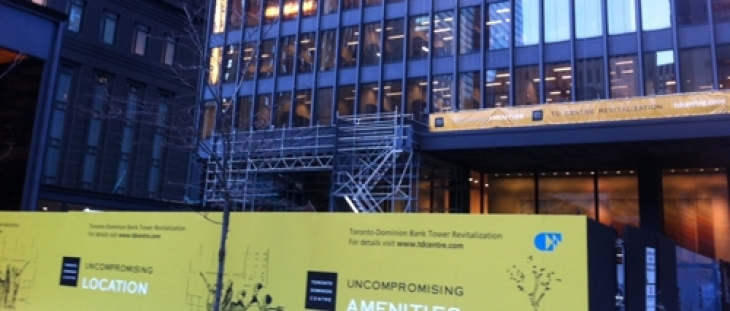
There are a lot of definitions of sustainability, but only one of them really matters. It’s the one anchored in what the business community tends to call uptake or buy-in. It’s one of the several reasons voluntourism is not sustainable: you may want to take your two weeks this year to build a school in India. But next year, you’re probably going to want to go back to the beach.
It’s also the reason green development can be sustainable.
There has to be something in it for people on both sides of the equation “and it has to be something other than making the world better for your great-great-grandkids, I’m afraid” or it’s a fad.
It’s why the plastic bag fee in Toronto went so smoothly: the stores got to keep the five cents. And it’s why multi-million and billion-dollar REITs and developers are being so light on their feet with green building. Sure, builders can get a brand hit off it, as Tridel, Minto and Menkes are with their residential towers. But they sell; it’s the landlords who are the real story here. Owners like Cadillac Fairview and OMERS really like it, because it saves money.
As Susan Pigg pointed out in Friday’s Star, this greening of the big smoke also comes along at a time when the old towers “the TD Centre, for instance” are looking to upgrade to keep or lure tenants in the wake of almost 8 million square feet of new office space being built south of the tracks (in a neighbourhood that could, if we’re not careful, start being called South Central).
Though the TD Centre has the most touted green overhaul, with a $110-million price tag, the Royal Bank Plaza and First Canadian place have also done a lot of work. First Canadian Place’s recladding “replacing all that marble with whiter, shinier stuff” was the most visible aspect of its makeover, but less glam things like washroom upgrades and lighting replacements will continue throughout the year, and chillers and transformers were replaced over the course of 2009 and 2010.
The Royal Bank Plaza did its renovations earlier “starting in 2005” and was given its LEED EB Gold status in January, 2010. As a result of all their various efforts, Oxford can say that it reduced its greenhouse gases by 21.9 per cent in 2010. Which is all well and good for their image and the planet and whatnot. But the real sustainability issue becomes obvious when they report the results: [here comes, as they report on one of their sites, in the] “a 25% reduction in electricity, a 48% reduction in steam, and a 43% reduction in chilled water. In 2010 alone, we saved our customers at the Royal Bank Plaza more than $1.8 million in energy costs.”
With numbers like that, why wouldn’t they continue? And of course they are. Their current goals include a 10 per cent reduction in per square foot energy costs by 2014, and a 10 per cent reduction in water use per square foot by 2015.
But this sort of sustainability is bigger than just big companies renting space to other big companies. It extends to entire cities, like Markham, for instance. As Ed Keenan points out in the current issue of The Grid, Mayor Frank Scarpitti sees his city’s urbanization and transit intensification in the same sort of customer-service light as Oxford and Cadillac Fairview. As Keenan quotes him saying, “Markham is a community made up of executives, and any time the GO line has been improved to downtown Toronto, it’s filled, you can’t get a seat… We’ve just approved a ‘GreenPrint,’ which is our sustainability plan. People applaud us… We can’t have a strong economy if we’re not looking after people socially as well. People see this as creating a healthy, vibrant, prosperous community, and if anybody thinks that you can pull off one of those elements without the others, they’re fooling themselves.”
New, efficient ventilation systems, light-sensitive windows and green roofs are lovely, and mass transit can do wonders, but the real king of green is density, as people all over the GTA are discovering, dollar signs in their eyes.
Vaughan mayor Maurizio Bevilacqua, along with developers Mario and Peter Cortellucci are intensifying their centre for very simple, transparent reasons, as well: it’s a good way to make a lot of money. For the mayor, it will increase property taxes; for the developers, the Cortelluccis and others, it will turn 300 acres of property into hundreds of millions of dollars. Future residents will like it because it will be centred on the new subway extension, and commercial tenants will like it because their employees will be able to get into work more easily, and possibly even live nearby.
The market isn’t the solution to all of our ills. But in the world of real estate and development, it can be green’s best friend.
Bert Archer writes for Toronto Standard. Follow him on Twitter @bertarcher.
Subscribe to our newsletter.












